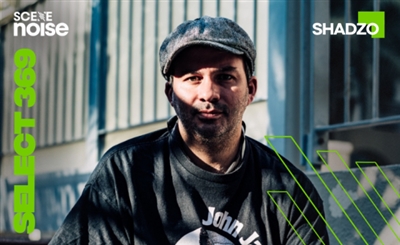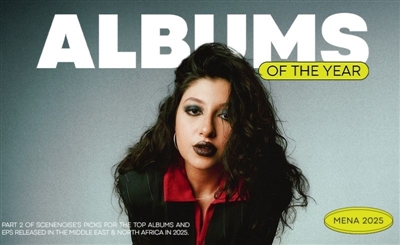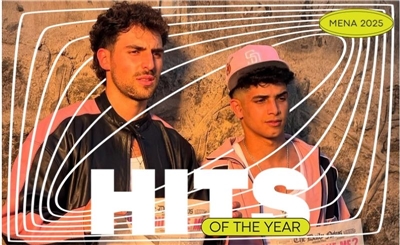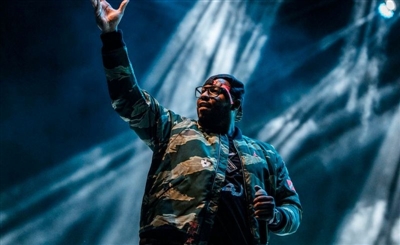Copied
A Synopsis of "Egyptian Soundscapes: Music Sound and Built Environments Conference"
The American Research Center in Egypt's three-day meeting of the minds.
Jan 30, 2019
.jpg)
Recently the American Research Center in Egypt hosted a three-day conference titled "Egyptian Soundscapes: Music Sound and Built Environments Conference". This event aimed to explore the "intersection of music, sound, and space in the Arab world." Claiming that Egypt has been a particularly important subject of research on the relationships between music, sound, noise and space/architecture, the conference, organized specifically by Nicholas Mangialardi used it as a focal point to explore soundscapes, noise, and music in Cairo and around Egypt.
Though scholars have explored this subject in the past, only recently has it come into focus in the area of Arab Studies. New conclusions to be drawn from recent research point to the importance of sonic landscapes in understanding Arab and Egyptian society. To acknowledge this, the ARCE assembled an impressive list of scholars and speakers to present their findings on the subjects. Impressively, among others they brought over anthropologist Dr. Ted Swedenburg, author of Oriental music blog The HawgBlawg, and Mark Levine, author of Heavy Metal Islam from the United States, as well as Dr. Michael Frishkopf, co-author of Music, Sound, and Architecture in Islam, from the University of Alberta; all three of these scholars lived and did research in Cairo at one point. Joining them were other international speakers, as well as a number of local researchers, scholars, and musicians.
Here we offer a synopsis of a few of the conference's key speakers on music:
Dr. Ted Swedenburg: "Nubian Music: Sound and Spaces"
Dr. Ted Swedenburg of the University of Arkansas has studied Nubian music extensively, and in the '90s, while teaching at AUC, he had the chance to experience the scene first hand. His lecture, "Nubian Music: Sound and Spaces" revolved around just this; specifically, his fieldwork done in Egypt starting in 1994. The main themes of the talk were oral tradition, the effects of migration out of Nubia, modernization without total assimilation to Egyptian culture, the folklorization of Nubian culture, cassettes, weddings and the political sphere - among other things. He described regularly going to the Nubian Club after teaching classes at the Greek Campus, the next block over, to take in the scene which would lead him to receiving invitations to weddings.
In the 19th century, there was a surge of Nubians immigrating to Cairo, forced by high taxes to abandon traditional agricultural lives. Known as Barabra in Cairo at the time, one of the common occupations filled by Nubians was the running of mahalat booza, that served a cheap alcoholic drink called booza, produced from barley or another grain.
The customers of booza houses were almost exclusively Nubian, along with a spattering of African slaves. Music was an integral part of the scene in these places, where musicians would sit and play tambura, or simsimiyya, known as kisr by Nubians, accompanied by tar or daf. Apparently, Sayyed Darwish would commonly attend a booza house in order to learn Sudanese songs, rhythms and accents, which he used to compose "Dingy Dingy" among other songs. The Barabra also used to set up booza booths at moulids.
In 1902, the British colonial government constructed the first Aswan Dam, again raised in 1912 and 1933, flooding more Nubian agricultural land each time, and spurring on new waves of migration to the cities, specifically young men looking for work. In 1964, the construction of the Aswan High Damn caused the complete flooding of what is now known as Old Nubia, forcing the resettlement of about 55,000 residents to New Nubia, or Kom Ombo. At the time, about half of the Nubian population was already outside of Nubia.
Before they were forced from their homeland, village music was an essential element of life. Nubian music uses the pentatonic melodic system - scales consisting of five notes - as opposed to the Arabic maqam modal system. Simsimiyya or kisr are mainstay instruments in many song forms, accompanied by very complex rhythms (there are 11 named) played on daf or tar. Other song forms consist exclusively of singing and intricate clapping patterns.
In a typical but ironic turn, the same Nasser regime that uprooted the Nubians aimed to incorporate them into Egyptian life, but via their folklore. They sponsored groups such as the Aswan Troupe for Folklore and Arts, allowing people to glimpse the façade of the Nubian cultural canon without understanding the context of the music, or the implications of its folklorization. This is a common backdoor practice taken by authoritarian powers aiming to ethnically homogenize a nation: the same thing has been done with the Berbers in North Africa and the Native Americans in the United States, to name a couple.
Post exodus, Nubian song began to tackle different subject matter: songs about the loss of their land, its beauty, and their desire to return. Dr. Swedenburg also highlighted artists such as the famed Hamza El Din, and Ali Hassan Kuban. He claims Hamza El Din was one of the first to play oud with songs in Nubian - in his case, he sang in Fadika, one of the two main Nubian languages. He was also essentially the first artist to break into the World Music scene, playing internationally and with artists such as The Grateful Dead, before moving permanently to Berkeley, California. In 1978, The Grateful Dead famously performed at the Great Pyramids, joined by Hamza El Din and other Nubian musicians. Swedenburg recalls seeing Hamza El Din at the Nubian Club, and recording his performances on cassette. He distributed these among friends, who went crazy for the music.
<iframe width="560" height="315" src="https://www.youtube.com/embed/lI4g1OrQCCk" frameborder="0" allow="accelerometer; autoplay; encrypted-media; gyroscope; picture-in-picture" allowfullscreen></iframe>
Ali Hassan Kuban, a Kanuzi speaker, and another integral figure in Egypt's Nubian music scene, also made it to the world stage. In the '50s and '60s, Kuban ran the market, providing various incarnations of big bands for hire at weddings and parties. These bands ran under his name, whether or not he was present.
<iframe width="560" height="315" src="https://www.youtube.com/embed/Y9L84hNxu3g" frameborder="0" allow="accelerometer; autoplay; encrypted-media; gyroscope; picture-in-picture" allowfullscreen></iframe>
Swedenburg highlighted the importance of cassette tapes in this era. Because they were cheaper than vinyl and easily bootlegged, they played a large role in the circulation of underground music by artists like Ahmed Adaweya and Sheikh Imam. Nubian bands who couldn't get spots on radio or TV could still obtain a following via cassette.
He also noted a growing skepticism in the era between the popularization of Nubian music - an increased use of Arabic, vapid lyrics, and electronic rhythms edging out complex Nubian patterns - a trait that also coincides with the rift between Nubians from cities and villages. Because of this, Nubian artists like Ahmed Mounib and Mohammed Mounir - thought wildly popular - were considered by Nubians to be outsiders, due to their common employment of Arabic.
His final point was to highlight the oral importance in Nubian music, specifically referencing the occasion in November of 2016, in which more than 150 Nubian activists blocked a 300km stretch of road between Kom Ombo and Lake Nasser, demanding their right to return home. Barred from traveling beyond a checkpoint by Egyptian authorities, the caravan staged a sit-in for three days. In this time, they prayed, danced, and sang songs about Nubian pride, roots, and the desire to return to their homeland.
Dr. Michael Frishkopf: "Sound, Architecture, and Islamic Reform: the Attenuation of Ritual Resonance in the Built Environment of Cairene Saint Veneration"
A professor of ethnomusicology at the University of Alberta, Dr. Frishkopf lived in Cairo during the '90s, doing field work. His lecture revolved around sound, architecture and saint veneration - specifically, he discussed the changes in architectural dimension due to Islamic reform.
The most interesting part of his lecture was the concept of "resonance" that he discusses. Resonance is the "collective ecstasy binding participants together in performance, and together with a shared world view, providing a basis for a more durable, local spiritual social fabric." It refers to the emotional intensity, in Arabic music referred to as taarab, that is a product of the participants and environment in which ritual music take place. It is dependent on these different factors, and the "feedback" that depends on the interaction between musicians and attendees: the audience communicates with phrases, gestures, or by giving money, and according to this reaction, the artist may continue in a certain maqam or speed. Frishkopf defines "generalized taarab" as: "emotional intensity in a flexible open communication system adapting to participants and environment that adapts to who is there, via feedback producing effective cognitive understanding and consensus."
<iframe src="https://player.vimeo.com/video/20411385" width="640" height="480" frameborder="0" webkitallowfullscreen mozallowfullscreen allowfullscreen></iframe>
<p><a href="https://vimeo.com/20411385">The weekly Saturday hadra at the saha of Sidi Ali Zayn al-Abidin (Cairo, Egypt, 1998)</a> from <a href="https://vimeo.com/frishkopf">Michael Frishkopf</a> on <a href="https://vimeo.com">Vimeo</a>.</p>
Saint worship in Islam is embodied in the construction and maintenance of sacred structures (shrines), and through the ritual acts of music or chanting (zikr). Another integral factor of this ecosystem is the concept of baraka - essentially, a measurement of sacredness in correlation to proximity to a mosque. Though the mosque itself is attributed with the highest level of baraka, most of these hadras take place at the threshold, the "liminal place surrounding a mosque". In these areas, worshippers still get the baraka from the mosque, while also gaining the freedom to worship it that comes from not being directly inside.
Thus, the space in which the hadra takes place is integral in establishing "resonance": an environment defined by the proper combination of baraka and audience feedback. Apart from establishing this concept, Frishkopf examines the attack on these saint veneration rituals via the use of architecture - the "changes in architectural dimension due to Islamic reform", specifically. He identifies various cases in which these practices were stunted or almost entirely eliminated at certain mosques because of spatial reorganization: a fence, or a walkover, for example. "Islamists oppose saint veneration on spiritual grounds, as deviation from Islamist principles. This opposition is pragmatic and strategic, aimed at curbing localizations and thereby fostering ritual unity presumed to support ritual unity of Muslim power," he says.
He specifically references the shrine of Sidi Ali Zayn al-Abidin in Cairo, which goes back to at least the mid 19th century. Though it had been host to a vibrant and tight-knit hadra, around the year 2000, they conducted a massive expansion of the mosque, essentially razing it to the ground and rebuilding it. In the process, the area for the hadra was eliminated.
<iframe src="https://player.vimeo.com/video/195241818" width="640" height="480" frameborder="0" webkitallowfullscreen mozallowfullscreen allowfullscreen></iframe>
<p><a href="https://vimeo.com/195241818">The weekly Saturday hadra adjoining the mosque of Sidi `Ali Zayn al-`Abidin (2008)</a> from <a href="https://vimeo.com/frishkopf">Michael Frishkopf</a> on <a href="https://vimeo.com">Vimeo</a>.</p>
His focus on Sainthood (the spiritual embodiment of Islam v. scholastic) and architecture highlights the often-underestimated role of sacred space in worship, and the effect a shrine can have on the social and religious fabric of a neighborhood. Through renovation and spatial reorganization, a shrine can be rendered useless, thus disturbing the spiritual resonance of the area, and rupturing the social engagement.
Mark Levine: "To Furious Affect: Forces of Music and the Restructuring of Order in the Egyptian Metal Scene, 1997-2017"
Mark Levine is a musician and professor of history at the University of California, Irvine. He has studied the metal scene of the Middle East extensively, and published a book titled Heavy Metal Islam. During his time in Cairo, Levine naturally delved into the metal scene; he says Egyptian metal bands are some of the most widely traveled metal bands of the international scene. In his lecture, he explores the intricacies of the metal subculture in Cairo, and its role in opposition and political potency.
His lecture loosely focused on his friend and a main player in the scene - Troll, singer of Beyond the East and a core member of the scene. He describes a time during the Satanic metal crackdown of the '90s, when the government arrested over 100 metal fans accused of being Satan worship. Troll, running from the police because of his leather jacket and metal t-shirt, took refuge in the barren area behind the pyramids, and for the first time screamed "brutally", a form of metal singing.
For metal heads in Cairo, the inherent disapproval of their music from society and the government turned them into a political force. Their sound became a set of rituals, and their subculture became a counterculture that is "not just exerting an identity in opposition to apparent culture, but a culture that had articulated a different vision of the future."
He relays an anecdote in which Shady Ayman Nour tells Levine about Friday being his favorite day of the week because he could spend three hours praying at the mosque, and then go play four to five hours of black metal with his band. Levine expressed surprise over the seemingly sacrilegious flow between these disparate sonic worlds, which prompts him to ask: what are the soundscapes of these young people?
Their music had incredible social power, something that the Egyptian government knew before them. An important fixture used to be the Baron Empain Palace in Heliopolis - a vacant villa that used to belong to an English baron, who would host occult rituals. Metal heads used to gather here to listen to music, and host underground shows. However, after some photos got out, they were arrested, and metal was driven underground.
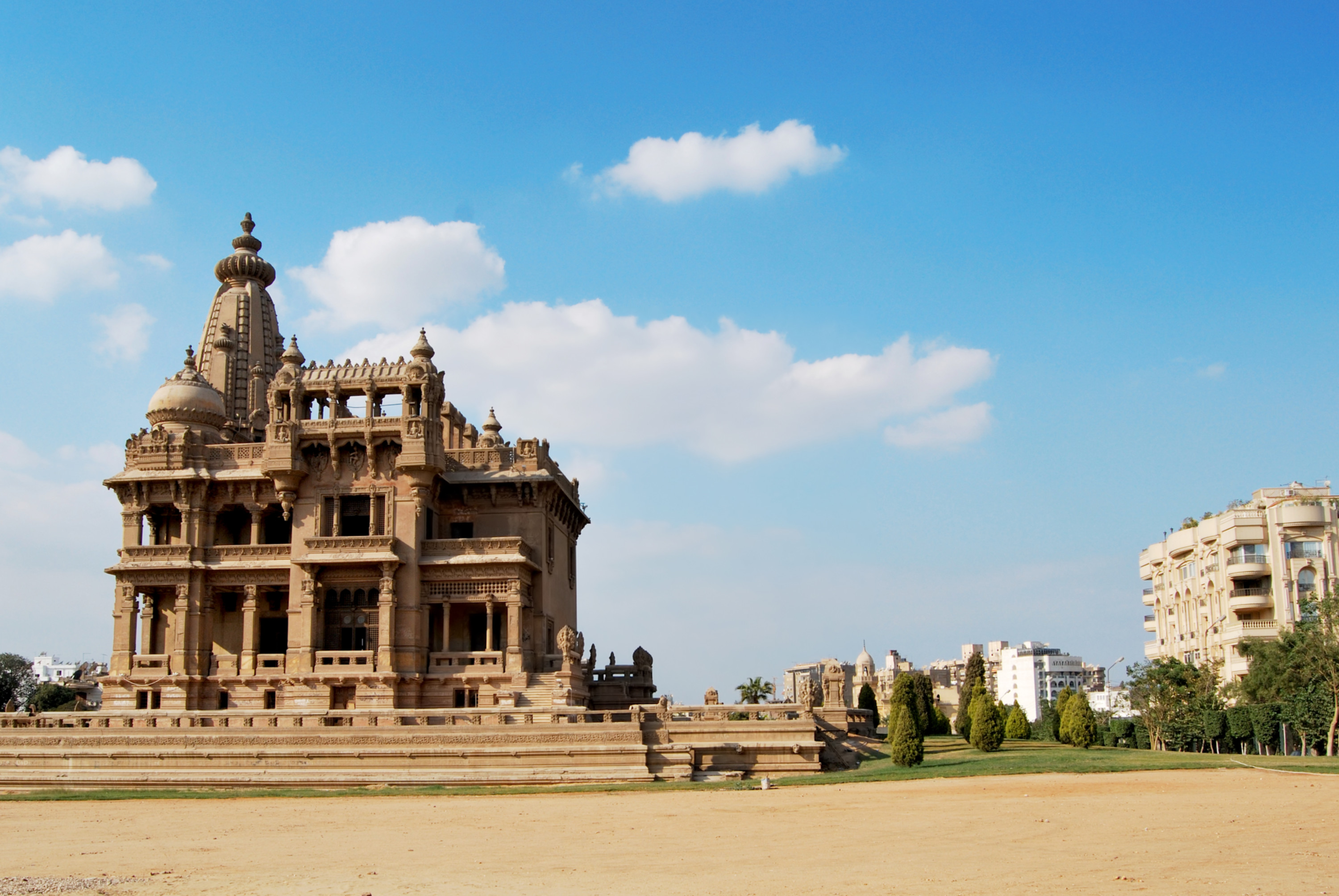
This also coincided with the emergence of the internet, which allowed the creation and distribution of music beyond the monitoring capacities of the government. Through all of this, a potentially revolutionary culture began to develop - in 2011, it made the full shift; the metal scene was heavily represented in the 2011 revolution. As Levine says, "not only is it [metal] offering an alternative to the system, it's directly challenging its very legitimacy."
Levine shines light on an important concept, which is the political evolution of a culture - from subculture, to counterculture, to revolutionary culture - not carried out voluntarily, but imposed by the powers that be. In conclusion, this kind of deeply political and aesthetic culture can "offer trajectory for understanding how culture and politics are aesthetically embedded inside each other". To Levine, this is shy we must take music more seriously as a political actor.
Though these were the main speakers, the three-day symposium was full of incredible explorations of sound and music in Egypt. Ibrahim Abbas gave an in-depth break-down of Aswan's song heritage, presenting captivating video footage of the different song forms that he filmed while doing field research. Elliott Cola focused on how the performance of poetry and activism are inseparable, focusing an instance in which Ahmed Fouad Negm and Sheikh Imam were imprisoned together for performing a politically critical piece. Nicholas Mangialardi, the orchestrator behind the entire conference, educated the audience about music related museums in Cairo, for example Abdel Halim Hafez's house in Zamalek and the Umm Kulthum museum. Following Darci Sprengel's lecture "Public Feeling, Sonic Atmosphere, and the Boundaries of Power in Contemporary Egypt", in which she spoke about mahraganat, Sophia Frankford explored the symbiotic relationships between chaabi music and the city, partially through her own experience playing violin with a chaabi band. She also highlighted how mahraganat has made chaabi "respectable", though at the same time it has killed its economy. Not just scholars, but active members of Cairo's music scene also took part: mahraganat artist Muhammad Khalifa, rapper Mohamed El-Deeb, and musician Nancy Mounir of Massive Scar Era.
Egyptian Soundscapes brought together a phenomenal meeting of the minds. Though numbers weren't vast, the attendees were passionate about the topics at hand, and more often than not, post-lecture discussions were cut off only because of a lack of time. It was intimate; lecturers were present at the lectures of others, inquiring and lending their input, and thus giving it the ambience of a truly productive and engaging conference.
Follow the American Research Center in Egypt on Facebook.
- Previous Article Getting Abyusif
- Next Article 23 Must-Watch Middle Eastern Music Documentaries
Trending This Month
-
Dec 24, 2025
-
Dec 23, 2025



